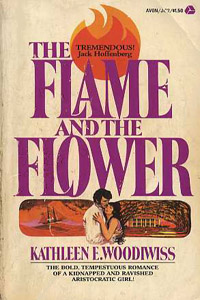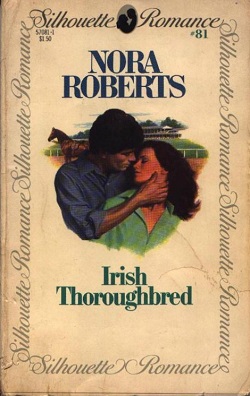
Gothic fiction, sometimes called Gothic horror, is a loose literary aesthetic of fear and haunting. The name refers to Gothic architecture of the European Middle Ages, which was characteristic of the settings of early Gothic novels.

Northanger Abbey is a coming-of-age novel and a satire of Gothic novels written by the English author Jane Austen. Although the title page is dated 1818 and was published posthumously in 1817 with Persuasion, Northanger Abbey was completed in 1803, making it the first of Austen's novels to be completed in full. From a fondness of Gothic novels and an active imagination distorting her worldview, the story follows Catherine Morland, the naïve young protagonist, as she develops to better understand herself and the world around her.

Ann Radcliffe was an English novelist and a pioneer of Gothic fiction. Her technique of explaining apparently supernatural elements in her novels has been credited with gaining respectability for Gothic fiction in the 1790s. Radcliffe was the most popular writer of her day and almost universally admired; contemporary critics called her the mighty enchantress and the Shakespeare of romance-writers, and her popularity continued through the 19th century. Interest in Radcliffe and her work has revived in the early 21st century, with the publication of three biographies.

Julia Pottinger, better known by her pen name, Julia Quinn, is an American author of historical romance fiction. Her novels have been translated into 41 languages and have appeared on The New York Times Bestseller List 19 times. She has been inducted into the Romance Writers of America Hall of Fame. Her Bridgerton series of novels has been adapted for Netflix by Shondaland under the title Bridgerton.

Genre fiction, also known as formula fiction or popular fiction, is a term used in the book-trade for fictional works written with the intent of fitting into a specific literary genre in order to appeal to readers and fans already familiar with that genre.

A romance novel or romantic novel is a genre fiction novel that primary focuses on the relationship and romantic love between two people, typically with an emotionally satisfying and optimistic ending. Authors who have contributed to the development of this genre include Samuel Richardson, Jane Austen, and Charlotte Brontë.

Jayne Ann Krentz, née Jayne Castle, is an American writer of romance novels. Krentz is the author of a string of New York Times bestsellers under seven different pseudonyms. Now, she only uses three names. Under her married name she writes contemporary romantic-suspense. She uses Amanda Quick for her novels of historical romantic-suspense. She uses her maiden name for futuristic/paranormal romantic-suspense writing.

The Mysteries of Udolpho is a Romance novel by Ann Radcliffe, which appeared in four volumes on 8 May 1794 from G. G. and J. Robinson of London. Her fourth and most popular novel, The Mysteries of Udolpho tells of Emily St. Aubert, who suffers misadventures that include the death of her mother and father, supernatural terrors in a gloomy castle, and machinations of Italian brigand Signor Motoni. It is often cited as an archetypal example of the Gothic novel.
The sentimental novel or the novel of sensibility is an 18th- and 19th-century literary genre which celebrates the emotional and intellectual concepts of sentiment, sentimentalism, and sensibility. Sentimentalism, which is to be distinguished from sensibility, was a fashion in both poetry and prose fiction beginning in the eighteenth century in reaction to the rationalism of the Augustan Age.

Michael McEachern McDowell was an American novelist and screenwriter described by author Stephen King as "the finest writer of paperback originals in America today". His best-known work is the screenplay for the Tim Burton film Beetlejuice.

The Flame and the Flower is the debut work of romance novelist Kathleen E. Woodiwiss. The first modern "bodice ripper" romance novel, the book revolutionized the historical romance genre. It was also the first full-length romance novel to be published first in paperback rather than hardback.
Eaton Stannard Barrett was an Irish poet and author of political satires. He also wrote a comic novel: The Heroine, or: Adventures of a Fair Romance Reader (1813).
Eliza Parsons was an English Gothic novelist, best known for The Castle of Wolfenbach (1793) and The Mysterious Warning (1796). These are two of the seven Gothic titles recommended as reading by a character in Jane Austen's novel Northanger Abbey.
The Castle of Wolfenbach (1793) is the most famous novel written by the English Gothic novelist Eliza Parsons. First published in two volumes in 1793, it is among the seven "horrid novels" recommended by the character Isabella Thorpe in Jane Austen's novel Northanger Abbey and an important early work in the genre, predating Ann Radcliffe's The Mysteries of Udolpho and Monk Lewis's The Monk.
Dear creature! How much I am obliged to you; and when you have finished Udolpho, we will read The Italian together; and I have made out a list of ten or twelve more of the same kind for you.
Have you, indeed! How glad I am! What are they all?
I will read you their names directly; here they are, in my pocketbook. Castle of Wolfenbach, Clermont, Mysterious Warnings, Necromancer of the Black Forest, Midnight Bell, Orphan of the Rhine, and Horrid Mysteries. Those will last us some time.
Yes, pretty well; but are they all horrid, are you sure they are all horrid?

Irish Thoroughbred is American author Nora Roberts's debut novel, originally published by Silhouette in January 1981 as a category romance. Like other category romances, the novel was less than 200 pages and was intended to be on sale for only one month. It proved so popular that it was repackaged as a stand-alone romance and reprinted multiple times. Roberts wrote two sequels, Irish Rebel and Irish Rose.
Young adult romance literature is a genre of books written for teenagers. As defined by Romance Writers of America, a romance novel consists of a central love story and an emotionally satisfying ending. Early young adult romances feature a teenage protagonist, who is typically female, white, and middle-class, while books in the twenty-first century include a wider variety of protagonist.

A novel is an extended work of narrative fiction usually written in prose and published as a book. The English word to describe such a work derives from the Italian: novella for "new", "news", or "short story ", itself from the Latin: novella, a singular noun use of the neuter plural of novellus, diminutive of novus, meaning "new". According to Margaret Doody, the novel has "a continuous and comprehensive history of about two thousand years", with its origins in the Ancient Greek and Roman novel, Medieval Chivalric romance, and in the tradition of the Italian Renaissance novella. The ancient romance form was revived by Romanticism, in the historical romances of Walter Scott and the Gothic novel. Some novelists, including Nathaniel Hawthorne, Herman Melville, Ann Radcliffe, and John Cowper Powys, preferred the term "romance". M. H. Abrams and Walter Scott have argued that a novel is a fiction narrative that displays a realistic depiction of the state of a society, while the romance encompasses any fictitious narrative that emphasizes marvellous or uncommon incidents. Works of fiction that include marvellous or uncommon incidents are also novels, including Mary Shelley's Frankenstein, J. R. R. Tolkien's The Lord of the Rings, and Harper Lee's To Kill a Mockingbird. Such "romances" should not be confused with the genre fiction romance novel, which focuses on romantic love.
Valancourt Books is an independent American publishing house founded by James Jenkins and Ryan Cagle in 2005. The company specializes in "the rediscovery of rare, neglected, and out-of-print fiction," in particular gay titles and Gothic and horror novels from the 18th century to the 1980s.
Sharp Edges is a contemporary romance written by Jayne Ann Krentz. It was published in hardcover by Pocket Books in February 1998 and became Krentz's 20th consecutive novel on the New York Times Bestseller List.

Romance, is a "a fictitious narrative in prose or verse; the interest of which turns upon marvellous and uncommon incidents". This genre contrasted with the main tradition of the novel, which realistically depict life. These works frequently, but not exclusively, take the form of the historical novel. Walter Scott describes romance as a "kindred term", and many European languages do not distinguish between romance and novel: "a novel is le roman, der Roman, il romanzo".












